Punt
« Les radeaux de Pount »
ENiM 10, 2017, p. 103-115.
 Sur l’une des parois de la tombe thébaine 143, on peut voir la figuration de deux radeaux, en relation avec le retour d’une expédition du pays de Pount. Ces radeaux ont souvent été interprétés comme des embarcations pountites. Les traditions se rapportant à la mer Rouge font de celle-ci le lieu où furent inventées ces embracations et leur existence y est effectivement attestée jusqu’à très récemment, notamment dans le sud de cette mer. Si cette figuration est incontestablement le plus ancien témoignage de l’existence de ces radeaux, ces derniers n’ont pas en revanche atteint l’Égypte en naviguant mais chargés sur les navires égyptiens revenant de Pount.
Sur l’une des parois de la tombe thébaine 143, on peut voir la figuration de deux radeaux, en relation avec le retour d’une expédition du pays de Pount. Ces radeaux ont souvent été interprétés comme des embarcations pountites. Les traditions se rapportant à la mer Rouge font de celle-ci le lieu où furent inventées ces embracations et leur existence y est effectivement attestée jusqu’à très récemment, notamment dans le sud de cette mer. Si cette figuration est incontestablement le plus ancien témoignage de l’existence de ces radeaux, ces derniers n’ont pas en revanche atteint l’Égypte en naviguant mais chargés sur les navires égyptiens revenant de Pount.
 On one of the walls of the Theban tomb 143, we can see the representation of two rafts, in connection with the return of an expedition from the land of Punt. These rafts have often been interpreted as puntites. Traditions relating to the Red Sea make it the place where these boats were invented and their existence is actually attested there until very recently, especially in the south of this sea. If this figuration is undoubtedly the oldest testimony of the existence of these rafts, they did not however reach Egypt by sailing but were loaded on the Egyptian ships returning from Punt.
On one of the walls of the Theban tomb 143, we can see the representation of two rafts, in connection with the return of an expedition from the land of Punt. These rafts have often been interpreted as puntites. Traditions relating to the Red Sea make it the place where these boats were invented and their existence is actually attested there until very recently, especially in the south of this sea. If this figuration is undoubtedly the oldest testimony of the existence of these rafts, they did not however reach Egypt by sailing but were loaded on the Egyptian ships returning from Punt.
 Consulter cet article (40901) -
Consulter cet article (40901) -  Télécharger cet article au format pdf (21457)
Télécharger cet article au format pdf (21457)
« Tell Defenneh et la route de l’encens »
ENiM 12, 2019, p. 1-24.
 L’objectif de cet article est de comprendre dans quelle mesure l’étude d’une stèle découverte à Tell Defenneh peut être éclairante pour évaluer la place de ce site au sein des routes commerciales qui relient l’Égypte et l’Arabie au premier millénaire avant notre ère. Une mise en contexte et une traduction commentée de ce document vont dans le sens d’une localisation sud-arabique du pays de Pount.
Il en ressort que le texte étudié relate une expédition vers l’orient organisée à l’époque saïte et confirmerait les traces matérielles de contacts avec ces territoires mises au jour à Tell Defenneh.
En outre, la domestication du dromadaire à partir du début du premier millénaire et les politiques saïtes de contrôle des routes commerciales de l’orient tendent à confirmer l’inscription de Tell Defenneh dans ce réseau.
L’objectif de cet article est de comprendre dans quelle mesure l’étude d’une stèle découverte à Tell Defenneh peut être éclairante pour évaluer la place de ce site au sein des routes commerciales qui relient l’Égypte et l’Arabie au premier millénaire avant notre ère. Une mise en contexte et une traduction commentée de ce document vont dans le sens d’une localisation sud-arabique du pays de Pount.
Il en ressort que le texte étudié relate une expédition vers l’orient organisée à l’époque saïte et confirmerait les traces matérielles de contacts avec ces territoires mises au jour à Tell Defenneh.
En outre, la domestication du dromadaire à partir du début du premier millénaire et les politiques saïtes de contrôle des routes commerciales de l’orient tendent à confirmer l’inscription de Tell Defenneh dans ce réseau.
 This article is a follow-up to an egyptology research project directed by Mr. Frédéric Servajean and defended at Montpellier 3 University Paul Valéry on June 13, 2018.
The aims of this paper are to demonstrate to what extent the study of a stela found at Tell Defenneh can be instructive to assess the place of this site within the trade routes connecting Egypt and Arabia in the first millennium BC. A contextualization and a commented translation of this document seem coherent with a South-Arabian localization of the land of Punt.
It emerges that the studied text relates a Saite expedition towards the East and confirms material traces of contacts with these territories uncovered at Tell Defenneh.
In addition, the domestication of the dromedary from the beginning of the first millennium and the Saite policies of control of the trade routes of the East tend to confirm the inscription of Tell Defenneh in this network.
This article is a follow-up to an egyptology research project directed by Mr. Frédéric Servajean and defended at Montpellier 3 University Paul Valéry on June 13, 2018.
The aims of this paper are to demonstrate to what extent the study of a stela found at Tell Defenneh can be instructive to assess the place of this site within the trade routes connecting Egypt and Arabia in the first millennium BC. A contextualization and a commented translation of this document seem coherent with a South-Arabian localization of the land of Punt.
It emerges that the studied text relates a Saite expedition towards the East and confirms material traces of contacts with these territories uncovered at Tell Defenneh.
In addition, the domestication of the dromedary from the beginning of the first millennium and the Saite policies of control of the trade routes of the East tend to confirm the inscription of Tell Defenneh in this network.
 Consulter cet article (33110) -
Consulter cet article (33110) -  Télécharger cet article au format pdf (18595)
Télécharger cet article au format pdf (18595)
« Les pays des arbres Ă myrrhe et des pins parasols. Ă€ propos de Tȝ-nṯr »
ENiM 12, 2019, p. 87-122.
 Les tentatives de localisation du « Pays du dieu » ont toujours été infructueuses. Un examen attentif de la documentation relative à ce toponyme montre qu’il a toujours désigné le sud-est de la péninsule arabique où poussent les arbres à aromates. À partir du Nouvel Empire un nouveau « Pays du dieu » apparaît dans la documentation pour désigner la région où pousse le pin parasol.
Les tentatives de localisation du « Pays du dieu » ont toujours été infructueuses. Un examen attentif de la documentation relative à ce toponyme montre qu’il a toujours désigné le sud-est de la péninsule arabique où poussent les arbres à aromates. À partir du Nouvel Empire un nouveau « Pays du dieu » apparaît dans la documentation pour désigner la région où pousse le pin parasol.
 Attempts to locate the “God’s land” have always been unsuccessful. A careful examination of the documentation relating to this noun shows that it has always designated the southeastern part of the Arabian Peninsula where the aromatic trees grow. From the New Kingdom a new “God’s Land” appears in the documentation to designate the area where the umbrella pine grows.
Attempts to locate the “God’s land” have always been unsuccessful. A careful examination of the documentation relating to this noun shows that it has always designated the southeastern part of the Arabian Peninsula where the aromatic trees grow. From the New Kingdom a new “God’s Land” appears in the documentation to designate the area where the umbrella pine grows.
 Consulter cet article (38938) -
Consulter cet article (38938) -  Télécharger cet article au format pdf (19058)
Télécharger cet article au format pdf (19058)
« La route d’OutĂ©net au mont Laban. Une nouvelle Ă©tude de deux conjurations du papyrus mĂ©dical Louvre E 32847 »
ENiM 13, 2020, p. 151-209.
 Cette étude continue l’analyse de deux importantes conjurations du papyrus médical Louvre E 32847, un papyrus publié il y a maintenant deux ans. En reprenant plus en détail cette analyse on peut retrouver les modes de pensée du médecin-scribe qui les a rédigées. À deux endroits, les conjurations sont écrites de façon inhabituelle ce qui permet de soupçonner l’existence de sens cachés réservés à d’autres médecins initiés et concernant une divinité importante du Proche-Orient.
Cette étude continue l’analyse de deux importantes conjurations du papyrus médical Louvre E 32847, un papyrus publié il y a maintenant deux ans. En reprenant plus en détail cette analyse on peut retrouver les modes de pensée du médecin-scribe qui les a rédigées. À deux endroits, les conjurations sont écrites de façon inhabituelle ce qui permet de soupçonner l’existence de sens cachés réservés à d’autres médecins initiés et concernant une divinité importante du Proche-Orient.
 This study analyzes two important incantations of the medical papyrus Louvre E 32847, a papyrus published two years ago, letting us discover the way of thinking of the physician-scribe who wrote them. Twice, incantations are written in an unusual way suggesting the existence of a hidden meaning intended for other insiders physicians about an important Near-East divinity.
This study analyzes two important incantations of the medical papyrus Louvre E 32847, a papyrus published two years ago, letting us discover the way of thinking of the physician-scribe who wrote them. Twice, incantations are written in an unusual way suggesting the existence of a hidden meaning intended for other insiders physicians about an important Near-East divinity.
 Consulter cet article (38087) -
Consulter cet article (38087) -  Télécharger cet article au format pdf (19513)
Télécharger cet article au format pdf (19513)
« OĂą les reliefs d’Hatchepsout Ă Deir el-Bahari situent-ils le pays de Pount ? »
ENiM 15, 2022, p. 139-179.
 Ce travail examine l’organisation des scènes pountites d’Hatchepsout à Deir el-Bahari, à partir de trois hypothèses de localisation de Pount : côte arabique de la mer Rouge, côte africaine et Soudan nilotique. Seule l’hypothèse arabique permet de reconstituer la logique de ce programme décoratif et de mettre en relief sa simplicité, sa logique et sa grande cohérence.
Ce travail examine l’organisation des scènes pountites d’Hatchepsout à Deir el-Bahari, à partir de trois hypothèses de localisation de Pount : côte arabique de la mer Rouge, côte africaine et Soudan nilotique. Seule l’hypothèse arabique permet de reconstituer la logique de ce programme décoratif et de mettre en relief sa simplicité, sa logique et sa grande cohérence.
 This work examines the organization of Hatshepsut’s puntite scenes at Dayr al-Bahri, based on three hypotheses for the location of Punt: the Arabian coast of the Red Sea, the African coast and the Nilotic Sudan. Only the Arabian hypothesis makes it possible to reconstruct the logic of this decorative programme and to highlight its simplicity, its logic and its great coherence.
This work examines the organization of Hatshepsut’s puntite scenes at Dayr al-Bahri, based on three hypotheses for the location of Punt: the Arabian coast of the Red Sea, the African coast and the Nilotic Sudan. Only the Arabian hypothesis makes it possible to reconstruct the logic of this decorative programme and to highlight its simplicity, its logic and its great coherence.
 Consulter cet article (28461) -
Consulter cet article (28461) -  Télécharger cet article au format pdf (10805)
Télécharger cet article au format pdf (10805)
ENiM 18 - 2025
4 article(s) - 11 mars 2025.
ENiM 1 à 18 (2008-2025) : 223 articles
4 019 407 téléchargements
8 332 167 consulations.
Index des auteurs

Mots clés

Derniers articles : 
Robert Steven Bianchi
Duplication and Continuity
(ENiM 18, p. 13-36 — 11 mars 2025) 
Frédéric Mougenot
Rénénoutet à la porte de la maison
(ENiM 18, p. 1-12 — 29 janvier 2025) 
CENiM - Mise en ligne des volumes Ă©puisĂ©s : 
 Anne-Sophie von BOMHARD DĂ©cans Ă©gyptiens, CENiM 23, Montpellier, 2020 — (2020)
Anne-Sophie von BOMHARD DĂ©cans Ă©gyptiens, CENiM 23, Montpellier, 2020 — (2020) 
 Jean-Claude Grenier L'Osiris ANTINOOS, CENiM 1, Montpellier, 2008 — (26 dĂ©cembre 2008)
Jean-Claude Grenier L'Osiris ANTINOOS, CENiM 1, Montpellier, 2008 — (26 dĂ©cembre 2008) 
TDENiM - Mise en ligne des volumes Ă©puisĂ©s : 
 Twitter
Twitter 3615170 visites - 4552 visite(s) aujourd’hui - 197 connecté(s)
© ENiM - Une revue d’égyptologie sur internet
Équipe Égypte Nilotique et Méditerranéenne - UMR 5140 - « Archéologie des Sociétés Méditerranéennes » (Cnrs) - Université Paul Valéry - Montpellier III
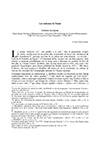
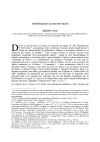
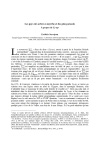
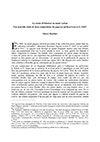
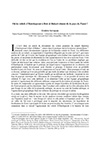





















 Contact
Contact
 Abonnez-vous !
Abonnez-vous ! Équipe Égypte Nilotique et Méditerranéenne
Équipe Égypte Nilotique et Méditerranéenne UMR 5140 « Archéologie des Sociétés Méditerranéennes » (Cnrs)
UMR 5140 « Archéologie des Sociétés Méditerranéennes » (Cnrs) Université Paul Valéry - Montpellier III
Université Paul Valéry - Montpellier III